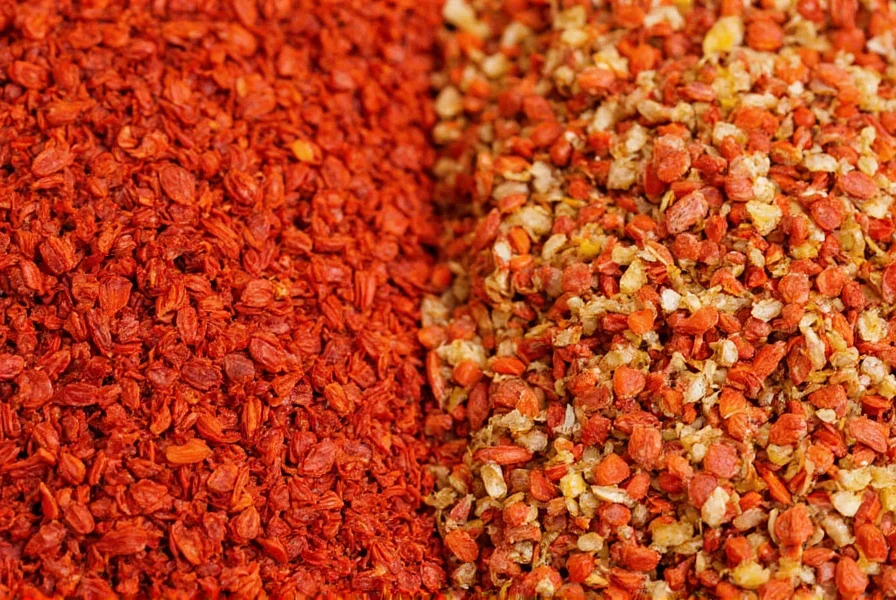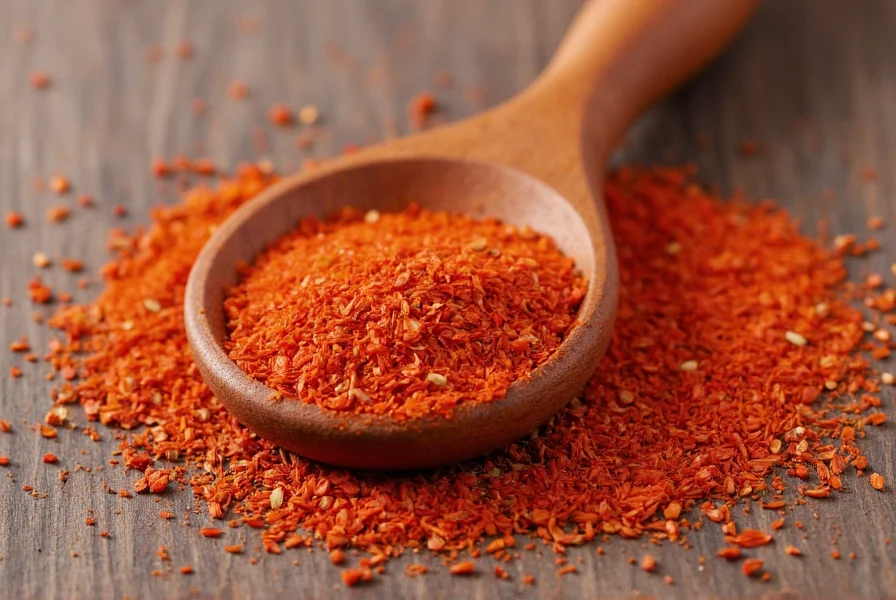Yes, red pepper flakes and chili flakes are generally the same product—dried, crushed red chili peppers used as a spice. However, regional naming conventions and minor compositional differences may exist depending on your location and the specific product brand.
When you're standing in the spice aisle wondering if you can substitute one for the other in your favorite pasta recipe, the answer is almost always yes. Both terms refer to the same fundamental ingredient: dried, crushed red chili peppers that add heat and flavor to dishes. Understanding the subtle distinctions can help you make more informed choices in your cooking.
Understanding the Terminology
The terms "red pepper flakes" and "chili flakes" are used interchangeably across most grocery stores and recipes. In the United States, "red pepper flakes" is the more common commercial term, while "chili flakes" appears more frequently in the UK, Australia, and other Commonwealth countries. This regional variation in naming causes much of the confusion.
What you're getting with either product is typically crushed cayenne peppers or similar hot chili varieties, though some blends may include multiple chili types. The flakes consist of the dried fruit of the chili pepper, including some seeds and membrane, which contributes to their heat level.
| Term | Common Regions | Typical Composition | Heat Level (Scoville) |
|---|---|---|---|
| Red Pepper Flakes | United States, Canada | Primarily cayenne peppers | 30,000-50,000 SHU |
| Chili Flakes | UK, Australia, Europe | Mixed chili varieties | 25,000-45,000 SHU |
| Crushed Red Pepper | Global (formal term) | Standardized chili blend | 30,000-50,000 SHU |
Composition and Heat Level Differences
While the terms are largely synonymous, examining the ingredient list reveals minor differences between products labeled as "red pepper flakes" versus "chili flakes." Most commercial red pepper flakes in the US consist primarily of Capsicum annuum varieties, particularly cayenne peppers. These typically range from 30,000 to 50,000 Scoville Heat Units (SHU).
Products labeled as "chili flakes" outside the US sometimes contain a blend of different chili varieties, which can create a more complex flavor profile with slightly varying heat levels. Some European "chili flakes" might include Aleppo pepper or other regional varieties, resulting in a milder heat (around 25,000-45,000 SHU) with more nuanced flavor notes.

Practical Cooking Considerations
For most home cooking applications, you can substitute red pepper flakes for chili flakes and vice versa without noticeable difference. The substitution ratio is 1:1 in nearly all recipes. When following international recipes, remember that:
- American recipes calling for "red pepper flakes" mean the same ingredient that British recipes call "chili flakes"
- Some artisanal "chili flakes" blends may have distinctive flavor profiles worth noting
- The heat level can vary between brands regardless of labeling
Professional chefs note that the primary difference often comes down to brand formulation rather than the name on the label. Checking the ingredient list for specific chili varieties provides more useful information than the general product name.
Common Misconceptions Clarified
Several misconceptions persist about these spice terms. Understanding these differences between red pepper flakes and chili flakes can prevent cooking mistakes:
- Myth: Chili flakes are always hotter than red pepper flakes
Reality: Heat levels depend on the specific chili varieties used, not the name - Myth: Red pepper flakes contain bell peppers
Reality: Despite the name, they're made from hot chili peppers, not sweet bell peppers - Myth: The terms indicate different processing methods
Reality: Both are made through identical drying and crushing processes

Shopping Tips for Home Cooks
When selecting between products labeled as red pepper flakes versus chili flakes, consider these practical tips:
- Check the ingredient list rather than relying solely on the product name
- Look for freshness indicators like vibrant red color (dull brown indicates age)
- Consider your recipe's requirements - some dishes benefit from specific chili varieties
- Store properly in airtight containers away from light to maintain potency
For authentic regional cooking, you might want to seek out specific varieties. Making your own crushed red pepper from dried chilies gives you complete control over the heat level and flavor profile, addressing the subtle differences between red pepper flakes and chili flakes that matter in precision cooking.
Final Verdict on Substitutability
When considering whether you can use chili flakes instead of red pepper flakes in your recipe, the answer is almost always yes with no adjustment needed. The minor variations that exist between products are typically less significant than the natural variation between harvests of the same chili variety.
Understanding what are red pepper flakes made of—simply dried and crushed hot peppers—helps demystify the terminology. Whether your container says "red pepper flakes," "chili flakes," or "crushed red pepper," you're getting essentially the same versatile spice that has been enhancing dishes from Italian pasta to Asian stir-fries for generations.
Are red pepper flakes the same as crushed red pepper?
Yes, red pepper flakes and crushed red pepper are identical products—both refer to dried, crushed hot chili peppers. "Crushed red pepper" is the more formal culinary term, while "red pepper flakes" is the common commercial name in the United States.
Can I substitute chili flakes for red pepper flakes in recipes?
Absolutely. You can substitute chili flakes for red pepper flakes in a 1:1 ratio with no adjustment needed. The terms refer to the same product, with "chili flakes" being more common outside the US and "red pepper flakes" predominant in American markets.
What's the difference between red pepper flakes and chili powder?
Red pepper flakes are coarse pieces of dried chili peppers, while chili powder is a fine powder that often contains a blend of spices (chili peppers, cumin, garlic powder, etc.). They have different textures and uses—flakes provide visible heat and texture, while powder blends more completely into dishes.
Why do some recipes specify red pepper flakes while others say chili flakes?
This typically reflects the origin of the recipe. American recipes usually say "red pepper flakes" while British, Australian, and European recipes tend to use "chili flakes." The ingredient is the same regardless of which term appears in your recipe.
Do red pepper flakes contain actual red bell peppers?
No, despite the potentially confusing name, red pepper flakes are made from hot chili peppers (typically cayenne), not sweet red bell peppers. The "red" refers to the color of the mature hot peppers used, not to bell peppers.











 浙公网安备
33010002000092号
浙公网安备
33010002000092号 浙B2-20120091-4
浙B2-20120091-4